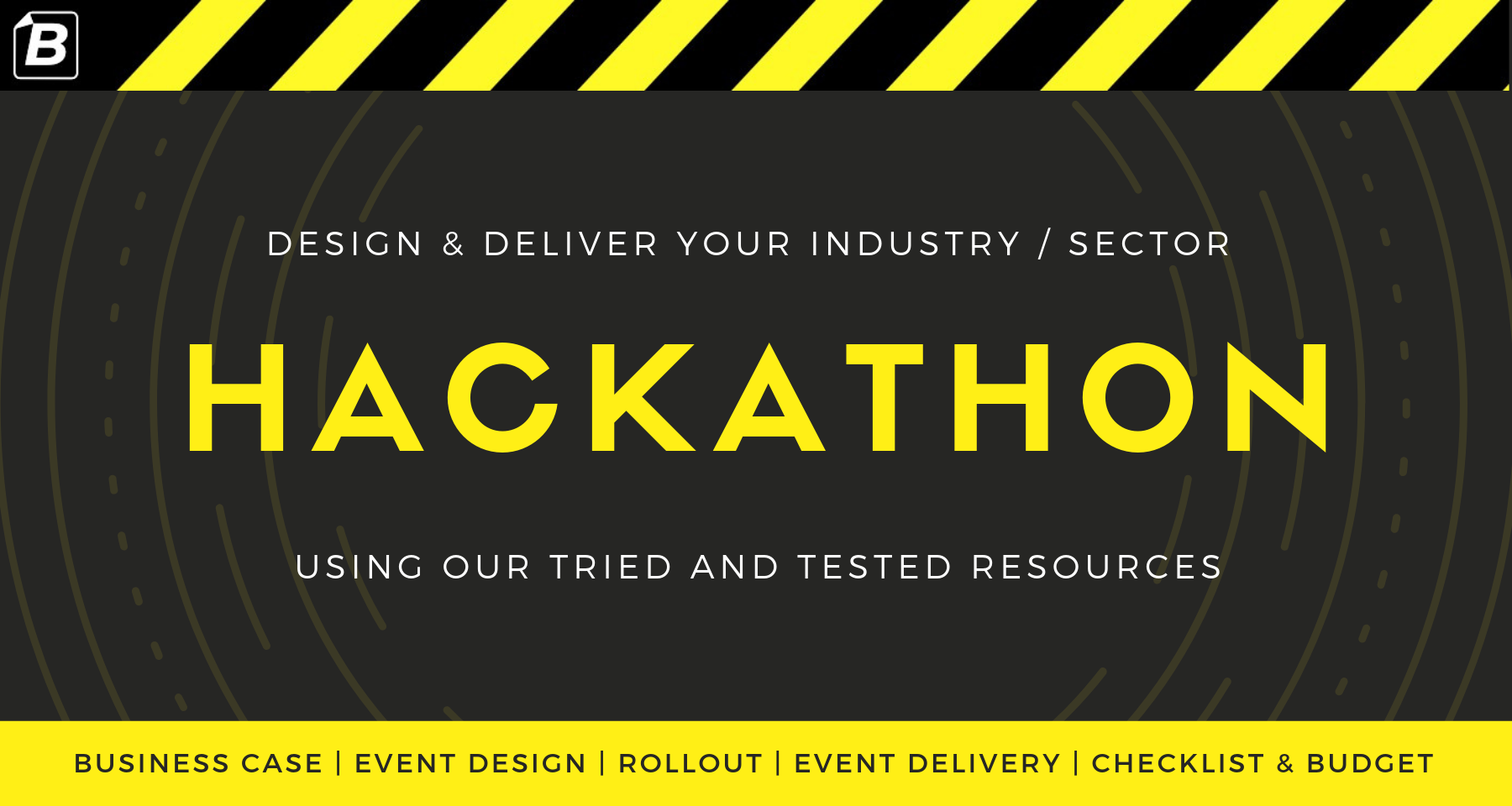
We have been involved in planning Industry Hackathon Events since 2012. As a result we have a refined process with expert resources.
“Hackathon” or “Hack Event”?
These days, the term “Hackathon” brings to mind herds of spotty nerds consuming pizza and staying awake for 3 days. It hails from the days when the event was more competition than a collaborative exercise.
“Hack Event” has become the more comfortable label for this routine of intense multidiscipline collaboration, with colleagues, to explore a shared challenge. Many successful corporations and product teams hold regular Hack Events as part of their working process.
Above all, Hackathons are a means to creating a culture of innovation.
The 4 stages of Planning & Delivery
This approach has worked well over the years for Industry Hackathons, where multiple competing organisations participate.
We base our approach on 30 areas broken into 4 sections: Business Case, Event Design, Event Rollout, and Event Delivery.
- BUSINESS CASE: Make the case for your Hackathon Event.
- Rationale.
- Benefits.
- Expectation Management.
- Hack Event Canvas.
- Three Horizons.
- FROST Innovation Framework.
- EVENT DESIGN: Design the key elements to deliver your Hackathon.
- Roadmap.
- Brand.
- Theme.
- Challenges.
- Target Participants.
- Location.
- Schedule.
- Support.
- EVENT ROLLOUT: Prepare your event and sign up your participants!
- Roadmap.
- Venue.
- Participants Hitlist.
- Suppliers.
- Managing invitations.
- Marketing Tools and Resources.
- Hack Team Formation.
- EVENT DELIVERY: Show time – Make your “event day” run smoothly!
- Get in.
- Registration.
- Kickoff.
- Support.
- Group Updates.
- Demo.
- Wrap up.
- Retrospective.
- Next Steps.
Extra tools for tracking your Hackathon delivery
Manage the detail while you deliver your event:-
- Master Checklist and Dashboard.
- Event Budget Spreadsheet.
Common Industry Hackathon Questions
It is not likely. However, if you hold Hackathons regularly, you will a) create exciting & feasible concepts more frequently, and b) shut down unviable concepts more rapidly. This will increase your efficiency exploiting new, profitable product opportunities.
If run well, Hackathons are a great way to increase talent attraction and retention, and to increase competitive advantage. Ask the participants if they would recommend the experience to a colleague. If “yes”, you have a talent success. Monitor the concepts in your Three Horizons pipeline – if it is growing after the Hackathon, then you have a success.
Hackathons encourage intense multidiscipline collaboration, and this serves to:-
1) reduce feedback loops for idea hand-off between disciplines from days to seconds.
2) Bad ideas get tested and closed down quickly.
3) Good ideas get iterated and optimised quickly.
This process is exciting, exhausting, and is the best way to get the best from your talented staff’s experience and expertise.
In terms of the risk of competitors stealing your intellectual property, Hackathon events are no more risky that conferences; we regularly send our staff to conferences to “mix with the enemy”. The benefits of Hackathons in terms of a) advancing your staffs’ experience, b) job satisfaction, and c) talent attraction {if you do your PR properly} far outweigh the small risk that someone else will try and succeed in mobilising a new idea first!
Summary
The above 30 planning and delivery areas will help you deliver a great Industry Hackathon.
There will always be critics, but Hackathon events are a potent force in driving innovation in for your organisation.
The benefits are such that 80% of Fortune 100 companies use hack events, and 50% of those do it regularly (Source – HackerEarth).
Some of our Industry Hackathon Event Resources
-
Hack Day Event Template Discount Bundle
$ 95.99 Add to cart -
Innovation Project Templates – Discount Bundle
$ 97.99 Add to cart -
Innovation Project Status Report Template (Powerpoint)
$ 18.99 Add to cart -
Innovation Project Proposal Template (Powerpoint)
$ 18.94 Add to cart -
Problem Statement Template to Support an Innovation Proposal
$ 17.56 Add to cart